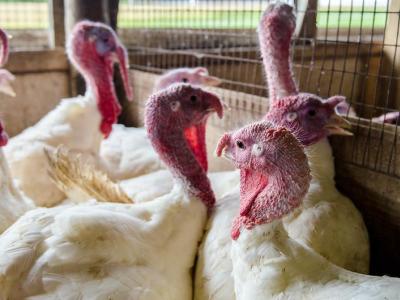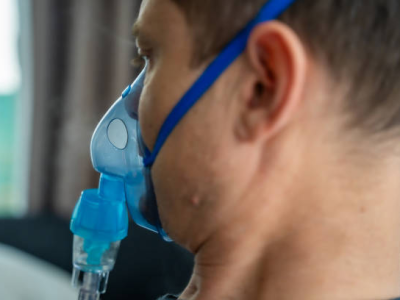US public sees frontline workers as first priority for COVID vaccine
A JAMA Network Open survey study of US adults' preferences for COVID-19 vaccine allocation in the event of a limited supply ranks frontline medical workers, high-risk children, and high-risk older adults as highest priority for vaccine distribution.
The telephone and Internet survey gathered data from 1,007 adults from Apr 23 to Apr 27 using the AmeriSpeak Omnibus Survey, a probability-based panel representative of the US household population. Respondents were asked to rank priority of vaccine receipt for the following groups: frontline medical workers, children with serious illness, people age 65 and older, middle-aged people with serious illness, essential (nonmedical) workers, pregnant women, children, and adults ages 19- to 64. Respondents were identified by age, race/ethnicity, and self-rated health status.
The survey reveals a high degree of willingness to allocate limited-supply vaccine to frontline medical workers, high-risk children, and high-risk older adults. "More than 90% of respondents identified medical workers as high priority. They also rated people at highest risk of dying as higher priority than people with lower risk," the study authors wrote.
Also, 81% of respondents ranked children with serious illness as high priority for vaccine distribution, followed by people 65 and older (80.6%), and middle-aged people with serious illness (75.2%). Essential workers were ranked as high priority by 72% of respondents, followed by pregnant women (64.0%), children (39.2%), and adults ages 19 to 64 (29.0%).
Age of respondents was associated with differences in assigning vaccine priority. Those 60 and older ranked children, essential workers, and pregnant women as high priority more frequently than other age or risk groups (70.9%, 81.8%, and 71.9% respectively.)
The results mirror public health experts' recommendations for vaccine distribution, the authors say, "suggesting the public would support guidelines that offer vaccine priority to groups defined by age, risk of dying, and employment type."
The authors advocate for public engagement in vaccine priority determination, concluding, "Since the public's hesitancy toward vaccines is a concern, consistent and evidence-based communication on the importance of vaccination and the priority groups for receipt of a scarce vaccine is critically needed."
Sep 29 JAMA Netw Open research letter
Study highlights changing epidemiology of carbapenem-resistant bacteria
Highlighting trends that could be reflected on a national level, a study today in Clinical Infectious Diseases shows that rates of carbapenem-resistant gram-negative bacteria (CRGNB) increased from 2000 through 2017 at a Pittsburgh hospital, and mortality was high among patients with CRGNB infections, but clinical outcomes improved over time.
To evaluate the changing epidemiology and clinical impact of CRGNB over time, a team led by researchers at the University of Pittsburgh School of Medicine looked at data and microbiology records on all patients at the University of Pittsburgh Medical Center with a positive clinical culture from 2000 through 2017. Carbapenem resistance was defined as non-susceptibility to carbapenem based on 2017 breakpoints and applied across the study period. The researchers assessed overall carbapenem resistance rates, pathogen-specific incidence rates, rates of antibiotic consumption, and patient outcomes.
The researchers evaluated a total of 94,888 isolates from 64,222 patients over the study period and found 10.4% of those isolates were carbapenem-resistant, accounting for a total 5,450 cases from 4,038 unique patients. Overall rates of carbapenem resistance increased from 6% to 11%, and they increased significantly for each pathogen over the study period. Pseudomonas aeruginosa was the most common CRGNB each year, but the second most common CRGNB varied over time (Acinetobacter spp. from 2007-2010, Klebsiella pneumoniae from 2011-2012, and Enterobacter spp. from 2013-2014). Isolation of CRGNB was common among transplant recipients and patients with multiple comorbid conditions.
The rate of CRGNB isolation increased from 0.81 to 1.65 per 1,000 patient-days over the study period, and carbapenem defined daily doses increased from 6.5 to 35.1 per 1,000 patient-days.
Evaluation of patient outcomes showed that overall 30- and 90-day mortality among CRGNB patients was 19% and 31%, respectively, with higher rates (27% and 38%) for CRGNB bloodstream infections. But the 30-day mortality rate declined from 24% in 2000 to 17% in 2017. The median lengths of total and post-CRGNB isolation hospital stays were 26 days and 13 days, respectively.
"CRGNB emerged in waves over time causing high rates of mortality," the authors wrote. "Despite increasing rates of CRGNB, overall patient outcomes have improved, suggesting that recognition and novel therapeutics have made a major impact."
Sep 29 Clin Infect Dis abstract
Russia, Taiwan report more avian flu outbreaks in poultry
Today and yesterday, Russia and Taiwan reported more avian flu poultry outbreaks involving different highly pathogenic strains, according to the latest notifications from the World Organization for Animal Health (OIE).
Russia reported four more outbreaks involving H5N8, all in Kurgan oblast in the southwestern part of the country, where similar outbreaks have occurred over the past several weeks. The latest events began between on Sep 16, and all involved backyard poultry. The virus killed 336 of 691 birds all told, and the surviving birds were slated for culling.
In a separate report, Russia also reported an H5 outbreak in a newly affected area, Karachay-Cherkess Republic, also in the country's southwest. The poultry farm outbreak began on Sep 18, killing 19,542 of 170,148 birds. Culling has been ordered as part of the response steps.
Elsewhere, Taiwan reported one more H5N5 outbreak, which was detected in a chicken at a slaughterhouse in New Taipei City. The event began on Sep 12, and testing was prompted by suspicious signs seen in chicken carcasses during postmortem inspection. The carcasses were destroyed and the area was disinfected. Plans are in place to collect samples from the farm of origin.
Sep 28 OIE report on H5N8 in Russia
Sep 28 OIE report on H5 in Russia
Sep 29 OIE report on H5N5 in Taiwan














